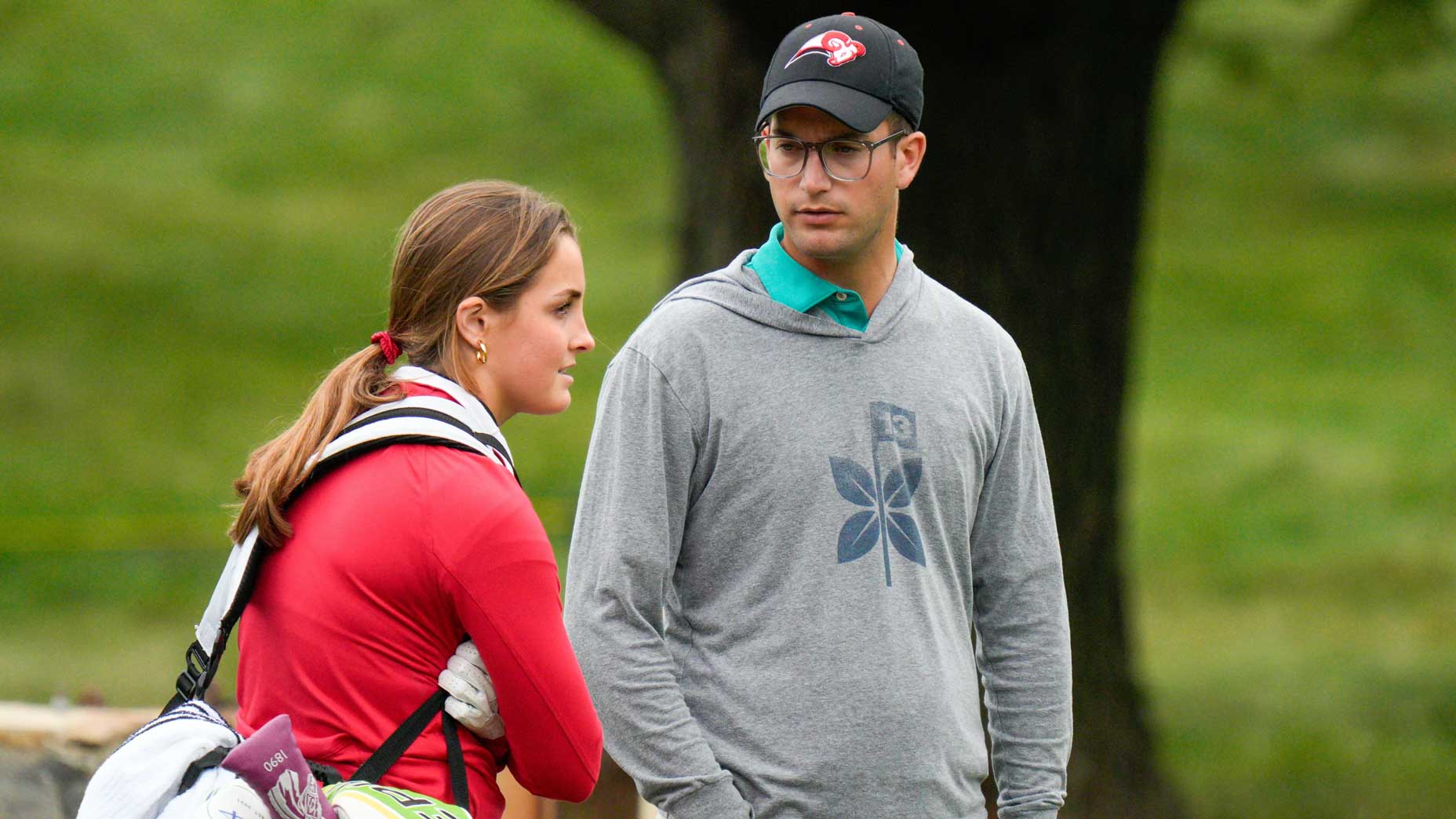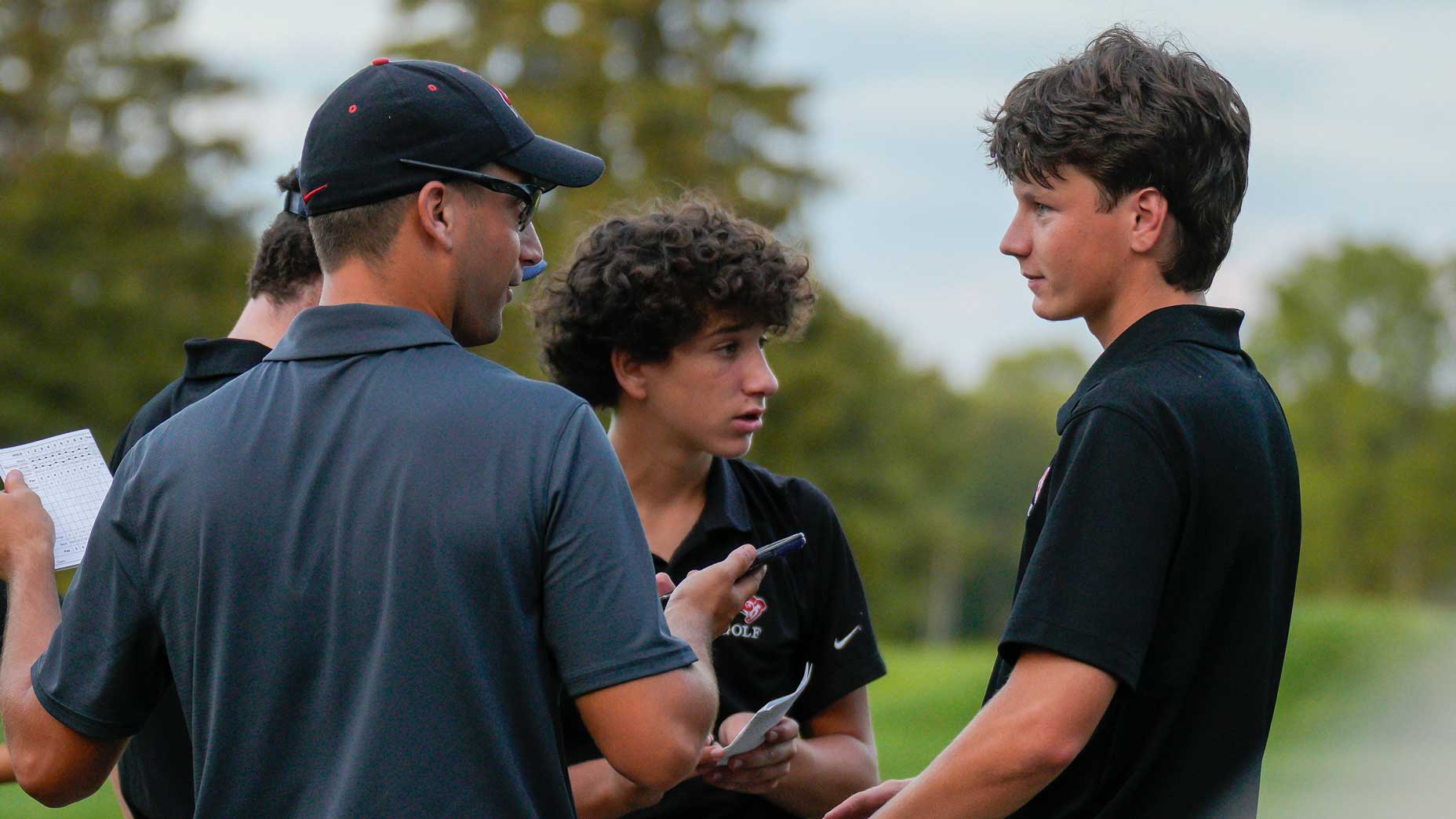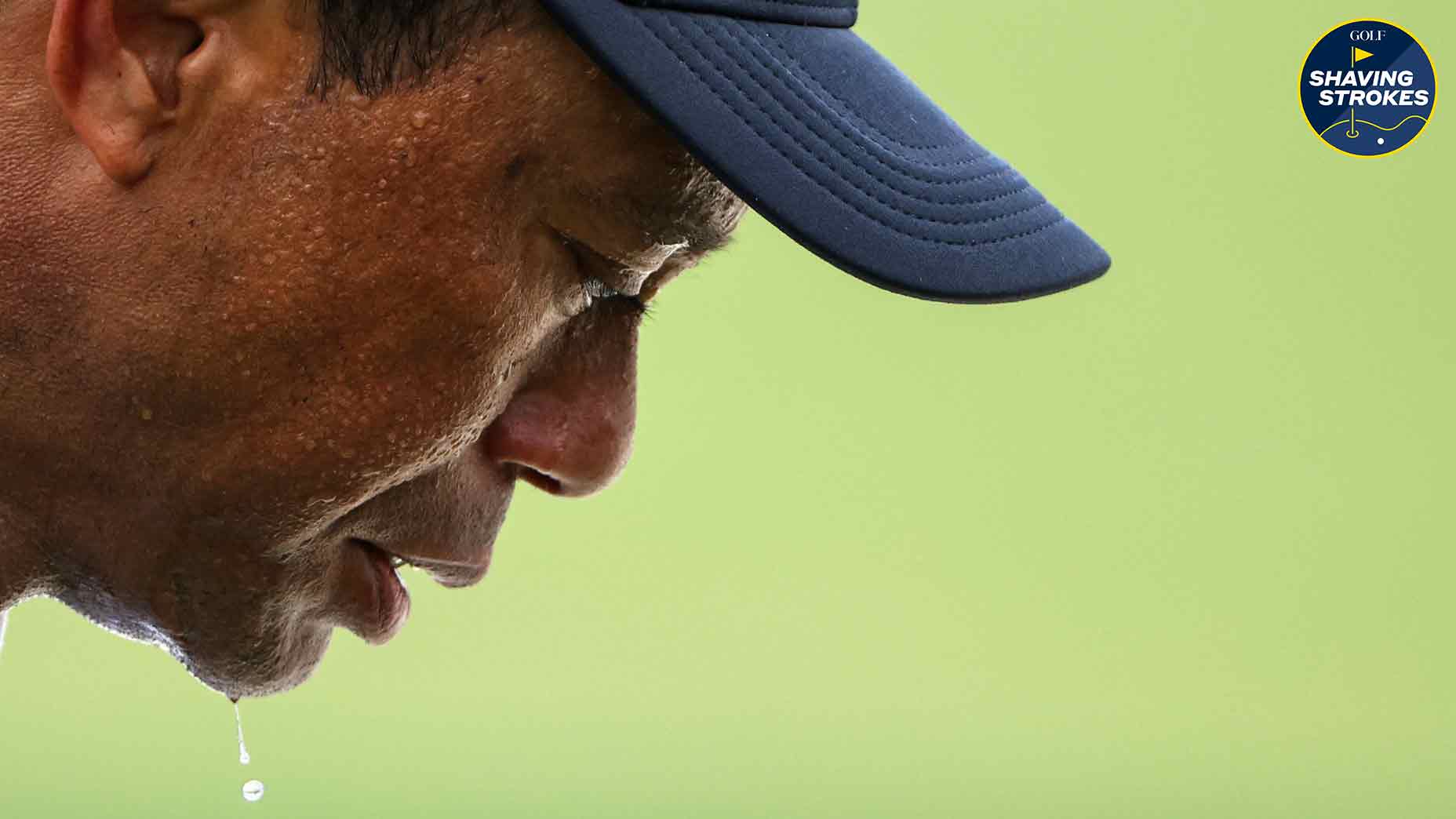10 lessons I learned coaching high school golf

The author talks with a player on the high school golf team he coaches.
Stephen O'Sullivan/Harriton Ram Golf
It was 10:06 p.m. British Standard Time on July 31 in Dornoch, Scotland, when I got a text. The message arrived as I was packing up my things at our rental house after a week-long trip in the Highlands.
The coach of my high school golf team had to step down, and the start of the season was just two weeks away.
I was already set to return for my second season as a volunteer assistant coach at Harriton High School, in Bryn Mawr, Pa., the same program where I had played for four years and of which I was captain in 2015. But I wasn’t sure if I could ready to be head coach of a program of 16-20 high schoolers, especially given my day (and sometimes night) job working on this site.
Still, with an unconventional work schedule and enough prior coaching experience to make me feel confident that I was ready, I took the job.
What followed was two and a half months of highs, lows, long afternoons, great wins, terrible frustrations, high school drama, spectacular shots, silly mistakes and on a couple of occasions nearly getting drilled by golf balls. I wouldn’t have traded any of it for anything, and I’ll be thrilled to keep doing it.
I’m hopeful I taught my players a thing or two over these past few months, but I also know that if you’re coaching at any level and not learning something yourself, you’re probably doing it wrong. This fall, I learned much about both myself and this game.
With that, here are the 10 lessons I learned during my first season coaching high school golf.
10 lessons I learned coaching high school golf
1. It’s about the kids and nothing else: This isn’t so much something I learned, more just something that absolutely must be front of mind at all times. No one cares who the coach is. Even if the kids tell you they don’t care about how they play (which is rare), they do. Don’t ever let your own aspirations cloud what the kids want to do. Give them as much choice as possible while balancing setting them up for the most success.
2. You’re the team coach, not a swing coach: This one applies to those of us who are not PGA Professionals (some coaches are) and aren’t experts of the golf swing. Even if you are, here in Pennsylvania, the PIAA golf season lasts from early August to mid-October. That is not nearly enough time to start changing players’ swings. Yes, you can have off-season programs, but your job isn’t to work with a player’s swing. There are countless other ways to help the team, which are…
3. Let the team decide who plays with whom: Part of the coach’s job is to set a lineup, which means deciding pairings. In Pennsylvania, we play nine-hole matches against one or two other teams with eight players each. The best five scores from each team count. Since it’s not match play, matching the best players with the other team’s best players only works if your team wants that. Perhaps they feel they play better with someone in particular. Perhaps one of your younger players feels they play better against the opposing team’s best player. Whatever it is, let them decide.

4. Teach them how to score, not how to play “golf swing“: I’m lucky that all the players on my varsity team are 10 handicaps or better. That means they all have some talent and can hit the ball. Lots of them can hit the high 4-iron draw or mega flop shots. As I mentioned earlier, I’m no swing coach, but I can show them how to get the ball in the hole in as few strokes as possible. Most of them want to hit the ball as hard as possible or hit the shortest club or play the highest flop. They want to hit drivers, cut dogleg corners and bring trouble in play. We all did that at one point. Then we realized that taking trouble out of play is so much easier than we think. Let the kids realize that.
5. Make golf easy for them and it becomes easier for you: We all make dumb decisions on the golf course for ourselves, but our thinking becomes much more rational when we’re thinking for someone else. We don’t ask people to hit shots of high difficulty that we might ask ourselves to hit because we don’t trust them to pull it off. You see this with caddying and coaching. We think we can pull off a cut 5-iron around trees to a green sloping from left to right and guarded by bunkers. But when we’re coaching or caddying, we tell the player to lay-up with an 8-iron. You know what happens? The player hits a good shot because it’s a lower degree of difficulty. Then they get up and down for par or birdie because they gave themselves a very simple third shot. Explaining this to the kids has helped me think like this more often for my own game.
6. Play the way you want your team to play: As you can probably tell, I love Dr. Bob Rotella’s concept of a conservative target and a cocky swing. The gist is, if you ask yourself to hit an easier shot, you’ll hit a better one because you have less stress to execute. I think one of the best ways to prove this concept to my team is to show them with my own play. I took the chance to have two of them caddie for me in local tournaments. Others, I played with during practices. Each time, I made sure to explain exactly what I was thinking behind every shot. I haven’t had a chance yet to caddie for any of my players in their tournaments, but if I do, I’d try to do the same thing and explain exactly why one shot is easier than another.

7. They’re not always going to listen and that’s OK: On my first day last year, I watched one of my players attempt to hit a 5-wood (instead of 3-wood) from about 240 yards into the wind over water. He absolutely roasted the ball, couldn’t have hit it any better. It carried the water by about a yard, stopping in the fringe 30 feet from the hole. He was excited about pulling off the shot, instead of noticing that had he missed it by the tiniest fraction, it would have been disaster. He didn’t realize that could have hit 3-wood, missed it a touch and been safe too. He believed he hit the right club and that’s OK. Celebrate the win for now. Deal with showing them the mistake later.
8. Surround yourself with those who are better than you: I don’t mean golfers. I believe a high school coach can have as much influence on a student-athlete’s life as anyone. They may also have no impact and that’s OK too. But, at just 26 years old, I am certainly lacking in the experience department. Luckily, I had four assistants to help me out. My JV coach was the only one on my staff who had ever coached anything before. It wasn’t golf, but being tasked with helming the junior varsity team, that’s not important. What was important is that the team respected him and listened to him when needed. He was also more of a player’s coach than I was. We were also super lucky to have three outstanding volunteer coaches, a rag-tag bunch made up of my former high school captain, my family’s neighbor when I was in high school who played college golf and now has kids that go to our school, and my father.
Without the four of them to cover for me or dispense advice that I couldn’t, I don’t know how we would have done.
9. Get comfortable being uncomfortable: This is something I learned in my days as a TV broadcaster, but it’s something I really grasped while I was coaching. Both for myself and my team. This is golf. Things are never going to go as planned. This is high school sports. Things are never going to go as planned. You have to be able to roll with the punches. You have to be able to adjust on the fly. You have to be able to deal with the unexpected. Kids get sick, schedules change and golf shots end up in penalty areas (and sometimes so do golf shoes). Those who succeed best in those circumstances don’t change their demeanor and panic. They stick to their game plan and make adjustments as necessary, simple as that.
10. Everyone is always learning: One thing I did with my team for almost every match, practice, speaker, etc. was ask them what they learned. Those who want to get better at competitive golf either play well in competition, or they learn something. Whether you shoot a career-low or a career-high, there’s always value when you play in competition. That goes for coaching too. Our team had a solid year, but not quite everything we wanted. We finished 10-3, winning all of the matches we were supposed to, but losing all three matches that could have been toss-ups. I saw the mistakes I made in those losses, but I saw the ones we made in the wins as well.
We finished fourth in our league this season, despite having a chance to win the league with two weeks left in the season. Next year, we’ll lose eight seniors from the program, five of whom played varsity matches regularly. But I’m optimistic about our chances. After all, we’ve got plenty more to learn.











